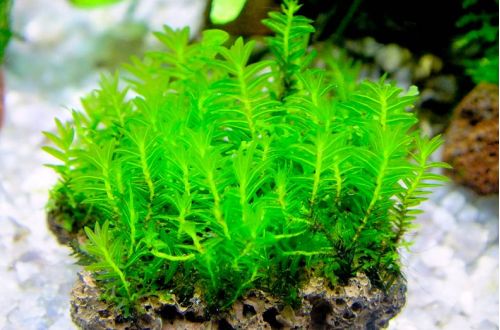
Proserpinac palustris
Proserpinac palustris, scientific name Proserpinaca palustris. The natural habitat extends over vast areas from the southern states of the United States, along Central America, including the islands of the Caribbean, and up to the tropics of South America. It grows everywhere in swampy reservoirs, shallow streams, ponds, lakes, as well as along the banks on wet substrates.
It has been known in the aquarium trade on the American continent since the 1950s, where a closely related species, Proserpinac pectinata, is also widely used. Much less common in Europe and Asia, until Tropica, one of the largest aquarium plant breeders, introduced a Cuban variety of Proserpinac palustris in the early 2000s, which quickly gained popularity among European aquarists.
The Cuban form in a favorable environment forms a compact bush of upright sprouts with many side shoots. Leaf blade pinnate. The color of the leaves depends on the growing conditions and varies from green to red-orange.
Able to grow in the air, but in this case the leaves become green and solid with serrated edges.
If the goal is to achieve maximum brilliance of this plant, then the content can be considered quite difficult. It is necessary to provide a soft nutrient soil, a high degree of illumination, additional introduction of carbon dioxide, relatively low concentrations of nitrates (5-10 mg/l) and high phosphates – 1.5-2 mg/l. In the case of an increase in the concentration of nitrates, the color of the leaves loses its red hues, becoming orange, and then green.
It grows quickly and needs regular pruning. In an aquarium, it is recommended to place in the central part, or at the back wall in small tanks. Should not be shaded by larger or floating plants.




